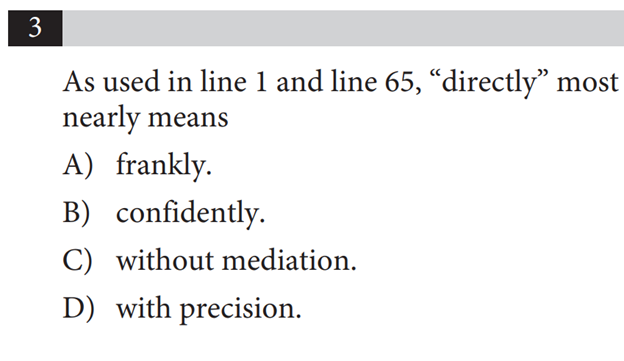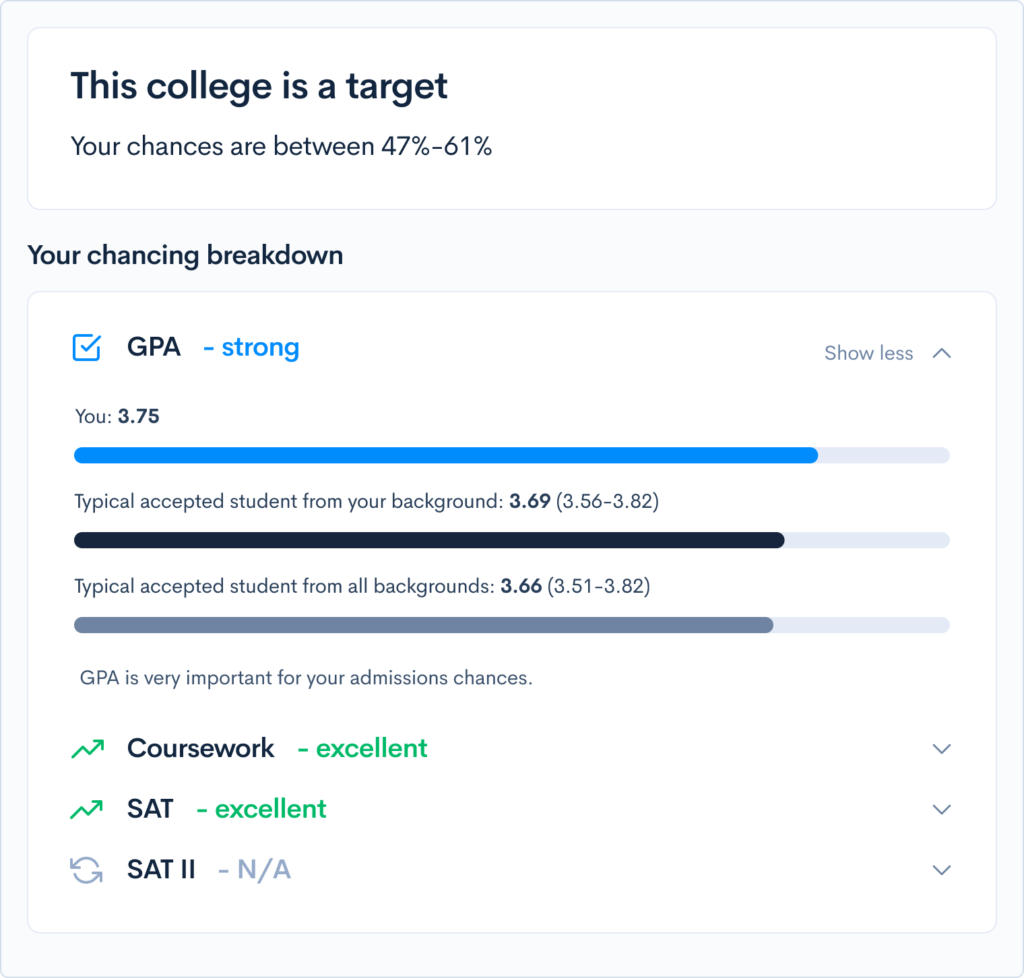How to Tackle the SAT Literary Reading Passages
The SAT Reading Test is structured in a very strategic manner. Hand-picked passages and carefully curated questions are designed to measure a specific set of skills meant to indicate your level of college readiness. For example, science-based questions test your ability to interpret data, and social science questions test your ability to analyze complex concepts. The literary section of SAT reading is your chance to showcase your penchant for close reading, understanding an author’s arguments and methods, picking up context clues, and more. In this post, we’ll give a brief overview of the SAT literary reading section, as well as our best tips and strategies for success. As stated on the Collegeboard website, the SAT reading section covers the following passages: Overall, the reading test is meant to measure your Command of Evidence, ability to derive the meaning of Words in Context, and your skills in Analysis in Social Studies and Science. Today, we will be focusing on just the first bullet item: the literature section. It’s just one passage, but it’s an important one, as it will often be the first reading passage on the test. It’s important to master this microsection in order to move on quickly to the other three. For this section, you must become skilled at comprehending works that may have been written in an unfamiliar time period. This can get confusing, so we’ll help you learn how to read between the lines and avoid getting bogged down by classical writing styles. Before we begin, we want to highlight the importance of the SAT. Most colleges look at the test as an indicator of college readiness. Many use the Academic Index, a cumulative score based on all of your stats, to evaluate your academic aptitude. If your scores are significantly lower than what the school typically considers, they might not even look at the rest of your application at all! If you already have your SAT score, take a look at our free chancing engine! It considers your stats, background, and extracurriculars to gauge your shot at acceptance at a wide range of schools. It can help you not only understand whether a particular school is a safety, target, or reach, but also help estimate your personal cost of attendance. The sample questions below are taken directly from the College Board’s Official SAT Practice Test 1 from their list of freely available resources. If you’d like to see it for yourself, you can download the test. This tip seems obvious, but actually implementing it isn’t always easy. Possible answers often look very similar, and there’s a good chance you’ve been stuck between two similarly plausible answers before. How many times have you waffled between them and picked the wrong one at the last minute? The SAT is designed to “trick” students, separating those who pick what seems the most correct to ones that logically and critically examine the nuance of each question. But the truth is, no matter how similar two questions might seem, there will always be one that is completely correct, while the others will have something not-so glaringly incorrect about them. It’s important to read extremely carefully. Questions will include phrasing like: “Which choice best describes…” “In line 15, “set” most nearly means… ” “The second paragraph primarily serves to… ” This implies that there can be more than one seemingly “correct” answer, but your job is to pick the best one. This makes the test tricky, but you can develop the skill set to navigate this. For example, let’s look at this question: The first paragraph in question: “Akira came directly, breaking all tradition. Was that it? Had he followed form—had he asked his mother to speak to his father to approach a go-between—would Chie have been more receptive?” Since we are practicing elimination today, let’s go through all of the possible answers. A) describe a culture. This one seems plausible because technically, a part of a culture is described here. The“form” Akira was meant to follow holds details of the culture he lives in and its social expectations. However, we wonder if this was the paragraph’s main purpose. Did the author include this paragraph to inform us of Japan’s 1920’s customs? This is doubtful, especially because the author only describes a small element of the culture, not the culture as a whole. Additionally, because the information is provided via a couple of questions, as though the narrator was wondering them himself, not as an informative exposition, we know that the author’s intention was not to describe the culture. B) criticize a tradition. Sure, the tradition is introduced, and there’s the implication that it has at least somewhat hampered Akira’s efforts. Still, that shouldn’t distract us from the real question: Was this the author’s motive? Because this paragraph was not written in a critical manner, we know that B cannot be the answer. C) question a suggestion. Some students—especially those in a rush—may see the word “question” here and leap to conclusions, as the first paragraph included two questions. However, the paragraph included no suggestions which were later questioned, so this can’t be it, either. D) analyze a reaction. Notice the tense change between the first couple of sentences and the rest of the paragraph. The passage starts off in the past tense, with “Akira came directly, breaking all tradition. Was that it?” The rest of the paragraph exists in the past perfect tense, referring to things that happened in a time earlier than before now. It is clear that before the narrator started pondering these questions, Akira had come directly, without a go-between, and triggered Chie’s unreceptive response. The questions serve to analyze Chie’s reaction and what may have caused it. Therefore, the correct answer is D, analyze a reaction. When reading literature from other time periods and cultures, you’ll have to adjust your perspective a bit. When reading, people tend to “fill in the gaps” with assumptions made from their personal experiences, and these assumptions might not match the reality of the world the passage was created for. To best understand how to avoid this, see this sample question: The lines in question: Line 1: “Akira came directly, breaking all tradition.” Line 65: “I ask directly because the use of a go-between takes much time.” A rather straightforward technique is to replace the target word with potential answers to see what “feels” right, i.e.: “Akira came frankly,” “I ask confidently.” This will work most of the time, and it would likely work here as well, but sometimes, more than one answer will make sense. This is where you have to look at the context of the world in which the passage takes place. Through reading the passage, the reader will understand that in Akira’s culture, it was custom to use a complex mediation process to ask for mutual parental approval to secure a marriage, so C is clearly the answer. Keeping the context in mind is essential not only for answering vocabulary questions but also for understanding the passage as a whole. We strongly recommend carefully reading the passage’s introductory paragraph, right under the passage introduction. It should briefly explain the setting and origin of the story, helping you read the story through the correct social and historical lens. Otherwise, you risk letting your current biases impact the way you understand the storyline. As we’ve mentioned before, it’s easy to read multiple potential answers and find yourself thinking “Well, this one might work… but so could this one…” This is what happens when students dive into reading the answers without giving any prior thought as to what they think it should be. When going in with too open a mind, students can get swayed by multiple decent-sounding answers. Therefore, we recommend forming an answer to the question before reading potential answers. If a question asks for the nearest meaning of a vocabulary word within a given context, come up with a synonym yourself. If it asks for the primary purpose of a paragraph, ask yourself why you think it was included. Make sure that your conclusions are actually supported by direct quotes from the passage, not just based on your own intuition. Then, check to see which answer matches yours best! This technique works especially well for those who struggle with test-taking time management. Students who struggle to finish a passage on time are often very thorough and detail-oriented. If this is your struggle, we really recommend skimming the passage for context, then reading over the questions. This will give you a stronger sense of what to look for when you go back and thoroughly read the passage. It’ll save you the time you may otherwise spend carefully re-reading the passage to look for evidence-based answers. Some recommend reading the questions before looking at the passage at all, marking off certain lines, paragraphs, and word choices if they’re mentioned, so you can pay closer attention to the marked sections when reading the passage for the first time. This strategy is a strong one, too, but it has a downside—because the questions and their potential answers might not make much sense to you, especially because you’ll be pressed for time and reading them very quickly, it might be hard to truly understand what to look for when reading the passage. This strategy is a great time-saver for students who are already well-acquainted with the SAT, though, so make the choice that feels best to you! Sometimes, you’ll be asked a question about the story which often explores a character’s motives or the “why” behind a certain development. Then, you’ll be asked a follow-up question asking you to identify textual evidence to support your prior answer. The first question in this situation is especially important to answer correctly because if you miss that question, your evidence question will likely be wrong as well. Even if you do realize your mistake, you’ll have to spend precious time re-reading and re-answering two questions. If this is a situation you run into often in your practice tests, we recommend the tips mentioned in Strategies #4 and #5. By reading the questions before the passage, you’ll be able to anticipate this. Even if you’re using the more common strategy of reading the passage first and answering the questions second, it’s useful to develop a habit of looking ahead to check. The passage will be fresh in your mind, so you might even have a sense of the quotes mentioned in the evidence section. If you’re struggling with the first question, getting an idea of the potential evidence might help you out. Ideally, you would take the SAT after having spent years reading classical literature for school and in your own time. This would build up deeply-ingrained aptitudes for reading and analyzing less-contemporary writing. Prospective English/humanities majors tend to have great success with the SAT reading section because they already like to read for fun. If this isn’t you, however, don’t worry! It’s not too late to develop these skills and habits. Check out our suggestions for books to read in preparation for the SAT and develop a conscious habit of explaining the main themes and motives of the readings to yourself or your friends. Don’t glaze over unfamiliar or unusual words; instead, look to their context to understand their meanings. Become used to setting your familiar assumptions aside and adjust your perspective for the cultural norms of each setting. In short, treat every book you read like you would an SAT passage: with great intention and attention. This is a strategy that works best in the long term, as binge-reading Jane Eyre a week before the SAT won’t help you much. In addition, we really only recommend this to students who struggle with the literature passages in particular. If the literature passages aren’t super difficult for you to begin with, reading solely for the sake of bettering your score won’t be the best investment of your time. We’re always fans of reading for enjoyment, though! This might not be what you want to hear, but no amount of SAT strategizing can replace the pure value of solid practice. Studying thoroughly for the SAT is a simple manner of honing in and narrowing down on your weakest areas. You may start off by taking note of whether you’re weaker in Math or EBRW. If you realize that the Reading passages are a point of concern, try to understand which types of questions you most frequently miss. Do you mostly struggle with vocabulary? Identifying the primary purpose of a passage? FInding the developmental pattern to a passage? Selecting which direct quotes most strongly support your previous answer to a question? Whatever it is, recognize it. There’s little point in sinking huge amounts of time into practice that you’re already great at instead of focusing on areas that need more improvement. Khan Academy’s study resources include practice tests and detailed feedback, as well as practice plans tailored around your key areas for improvement. Our Ultimate Guide to the SAT Reading Test post has a detailed list of even more amazing SAT study resources. Almost all of our strategies require a clear head. After all, the test involves making many small distinctions and paying attention to detail while still taking note of the big picture. During the test, you should only be thinking about the questions and answering them correctly, with no unnecessary surprise or anxiety. Therefore, you should not only come in well-fed and well-rested but also knowledgeable about the structure of the test and the types of questions you should expect to answer. In addition to understanding the test, you should get to know yourself. Research plenty of strategies and don’t be afraid to experiment. If you’re very committed to significantly raising your score, your work will have to be focused and intentional as you hone in key areas of improvement. Everyone thinks and works differently, and not all of us share the same challenges. For more SAT help, check out some of our other posts: What’s Covered:
What Does the SAT Reading Test Cover?
How Will the SAT Impact My College Chances?
Tips and Strategies for the SAT Literary Passages
1. Eliminate answers carefully.


2. Consider cultural context.

3. Create your own response.
4. Skim first, read second.
5. Questions first, passage second.
6. Anticipate Paired Questions
7. Read!
8. Finally…Practice, practice, practice!
Final Tips and Resourcess


